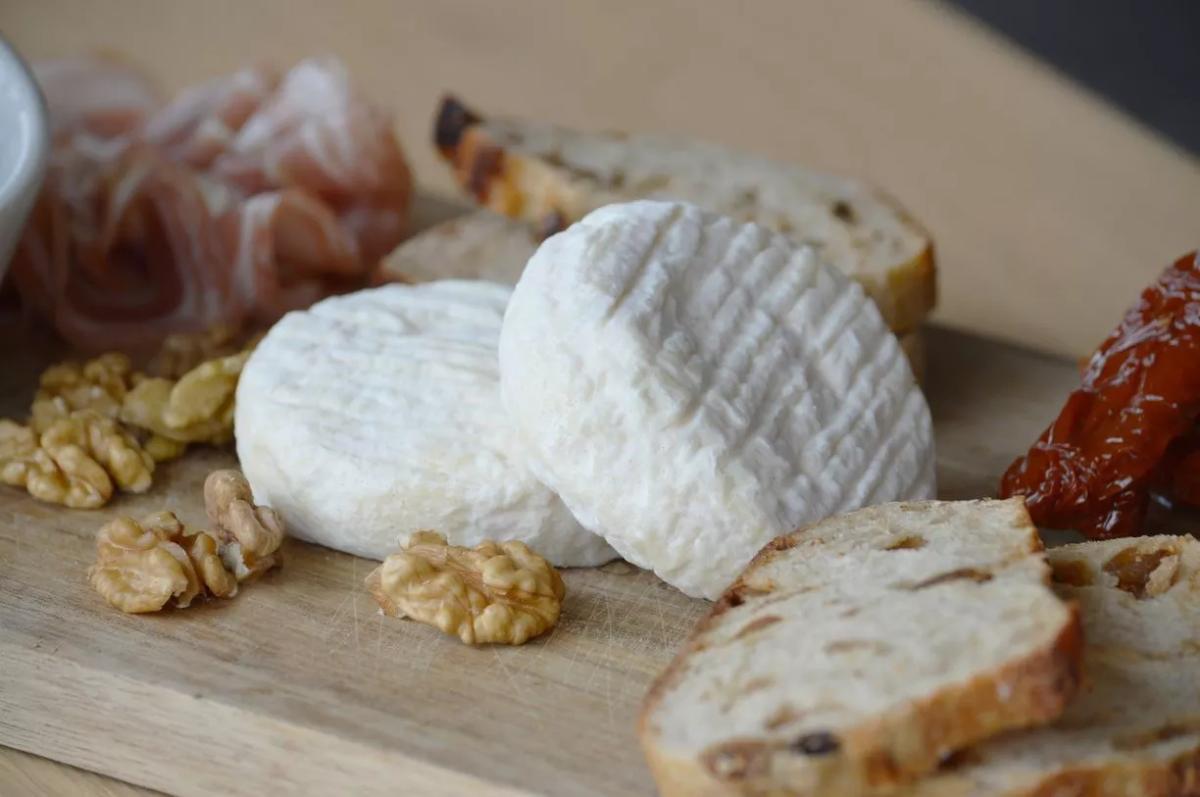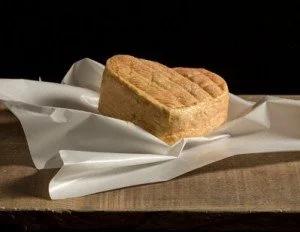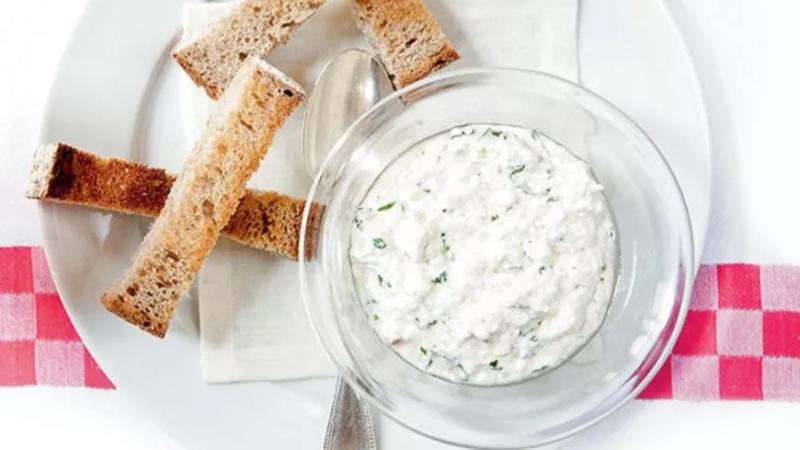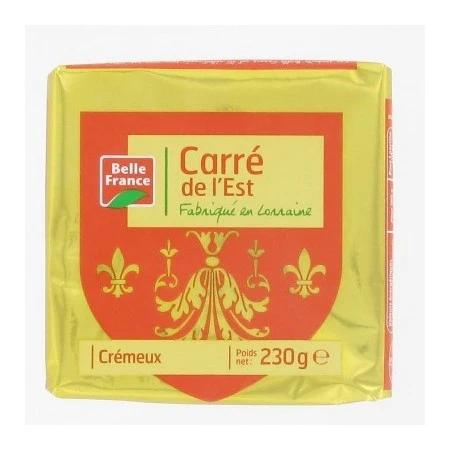Discover Saint-Marcellin, a creamy French cheese with centuries of royal heritage. Learn its fascinating history, artisanal production, and perfect pairings. Explore why this delicate, nutty delight deserves a spot on your cheese board. From medieval traditions to modern-day PGI protection, uncover its rich story. Taste the elegance of France in every spoonful!
Estimated reading time: 10 minutes
Key Takeaways
- Saint-Marcellin is a creamy French cheese with centuries of royal heritage
- Protected by PGI (Protected Geographical Indication) status
- Features a delicate texture that transforms from chalky to runny as it ripens
- Pairs beautifully with crusty bread, figs, and Beaujolais wine
- Offers health benefits including calcium, probiotics, and stress-reducing GABA
Table of Contents
- Introduction
- The History and Heritage of Saint-Marcellin
- The Art of Saint-Marcellin Cheese Production
- Saint-Marcellin vs. Other French Cheese Varieties
- Health Benefits of Saint-Marcellin
- Chef Secrets: How to Enjoy Saint-Marcellin
- Where to Buy Authentic Saint-Marcellin
- Storing Saint-Marcellin: Keep It Creamy
- Do's and Don'ts for Cheese Lovers
- What Makes it a Must-Try Cheese
- Pairing Suggestions for Perfect Enjoyment
- Easy Ways to Use Saint-Marcellin at Home
- Conclusion: Why Saint-Marcellin Belongs on Your Table
- FAQ
Introduction
Imagine a cheese so creamy it melts on your tongue, yet steeped in centuries of French tradition. Meet Saint-Marcellin, a small but mighty star of French dairy culture. This cheese, with its delicate texture and robust heritage, has charmed everyone from medieval kings to modern foodies. In this guide, we'll explore its fascinating history, how it's crafted, and why it deserves pride of place on your next cheese board.
The History and Heritage of Saint-Marcellin
 Saint-Marcellin's story begins in the 15th century in France's Dauphiné region. Legend says King Louis XI stumbled upon it during a hunting trip when locals offered him the cheese—then made with goat's milk. He loved it so much, it became a royal favorite! By the 1800s, railways helped spread its fame, and today, it's protected by a PGI (Protected Geographical Indication) to preserve its authenticity.
Saint-Marcellin's story begins in the 15th century in France's Dauphiné region. Legend says King Louis XI stumbled upon it during a hunting trip when locals offered him the cheese—then made with goat's milk. He loved it so much, it became a royal favorite! By the 1800s, railways helped spread its fame, and today, it's protected by a PGI (Protected Geographical Indication) to preserve its authenticity.
Fun fact: Early versions were so small, farmers traded them as currency for goods like bread and wine! [Source: Hamish Johnston]
But wait—there's more to its origin story! The cheese is named after Saint Marcellin, a 4th-century bishop known for his kindness and dedication to his community in the Rhône-Alpes region. Local farmers, inspired by his legacy, began crafting this cheese as a humble tribute. By the 19th century, it had evolved from a rustic snack to a nationwide sensation, thanks to cheesemakers who preserved its traditional methods even as production scaled up.
Traditional Events
Every September, the town of Saint-Marcellin hosts the Fête du Fromage, celebrating its namesake cheese with tastings, artisan markets, and demonstrations of traditional cheese-making techniques. Visitors can watch affineurs age wheels in chestnut leaves, a nod to medieval practices. The festival also features pairings with regional wines like Beaujolais—perfect for cheese lovers planning a French wine and charcuterie night.
Did you know? In the early 1900s, Saint-Marcellin was nearly lost to industrialization, but passionate artisans revived old recipes, ensuring its survival. Talk about a cheesy comeback!
The Art of Saint-Marcellin Cheese Production
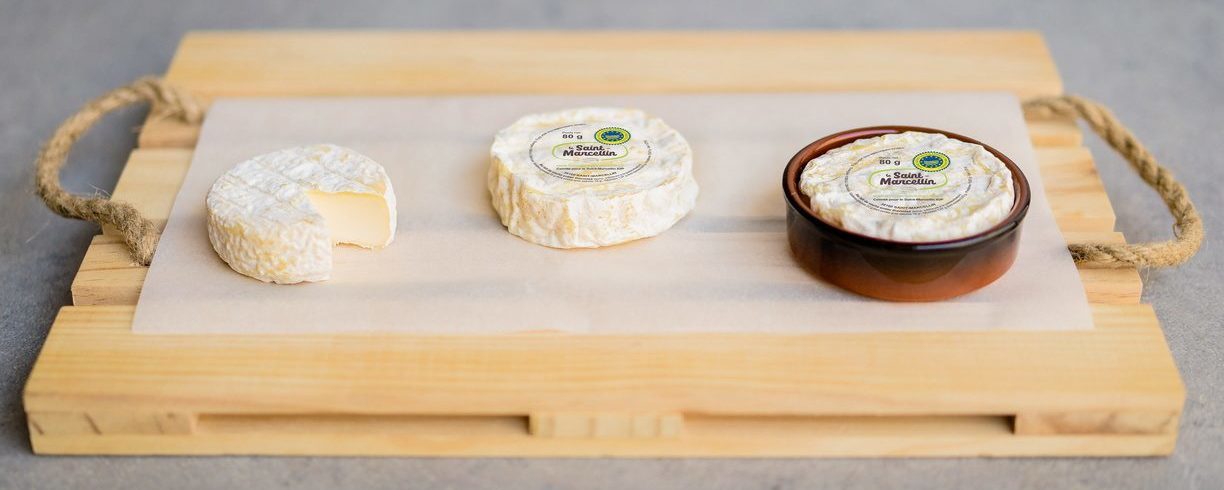 Crafting Saint-Marcellin is a labor of love. Traditionally made with cow's milk (though some artisans still use goat's milk), the curds are hand-ladled into molds and aged for 1–3 weeks. Farmhouse versions use raw milk for deeper flavor, while industrial batches pasteurize for consistency. As it ripens, the cheese transforms from chalky to luxuriously runny—a hallmark of its delicate texture.
Crafting Saint-Marcellin is a labor of love. Traditionally made with cow's milk (though some artisans still use goat's milk), the curds are hand-ladled into molds and aged for 1–3 weeks. Farmhouse versions use raw milk for deeper flavor, while industrial batches pasteurize for consistency. As it ripens, the cheese transforms from chalky to luxuriously runny—a hallmark of its delicate texture.
Pro tip: Look for a velvety rind and creamy interior to gauge quality. [Source: Cheese.com]
Here's a quirky tidbit: Some cheesemakers still age Saint-Marcellin in chestnut leaves, a medieval practice believed to enhance its earthy aroma. Imagine unwrapping a cheese like a tiny forest gift!
DIY Alert
Home cheesemakers can try their hand at Saint-Marcellin using kits from cheesemaking.com, which provide step-by-step instructions. Or watch a visual guide to the process in this YouTube tutorial.
Saint-Marcellin vs. Other French Cheese Varieties
How does this cheese stand out in France's crowded fromage scene?
- Brie: Firmer, with buttery notes.
- Camembert: Earthier and denser.
- Reblochon: Semi-soft and pungent.
Saint-Marcellin steals hearts with its mild, nutty flavor and spoonable creaminess. Pair it with crusty bread, figs, or a glass of Beaujolais for a match made in heaven.
Fun comparison: Think of it as Brie's smaller, creamier cousin who prefers quiet evenings with a glass of wine.
Health Benefits of Saint-Marcellin
Beyond its taste, this cheese packs nutrients:
- Calcium for strong bones.
- Probiotics from fermentation to support gut health.
- Protein to keep you energized.
Enjoy in moderation—its rich flavor means higher fat content. Lactose-sensitive? Proceed with caution, as traces may remain.
Bonus: The cheese's fermentation process creates gamma-aminobutyric acid (GABA), a compound linked to reduced stress. Who knew cheese could be Zen?
Chef Secrets: How to Enjoy Saint-Marcellin
Top chefs adore its versatility.
- Serve it room temperature: Let it ooze onto a walnut-studded salad or tart.
- Wine pairings: Beaujolais or crisp whites like Chardonnay.
- Avoid overheating: Gentle warmth enhances its texture; high heat ruins its magic.
It's like edible silk—simple, elegant, and unforgettable. – A Lyon-based chef.
For a showstopper: Hollow out a sourdough loaf, fill it with Saint-Marcellin and roasted garlic, then bake until gooey. Dip, devour, repeat!
Where to Buy Authentic Saint-Marcellin
Seek out specialty cheese shops or trusted online retailers. Authentic versions bear the PGI seal and have a plump, creamy look. Avoid imitations with artificial rinds or sour smells. Not in France? Importers like Murray's Cheese or La Fromagerie often stock it.
Insider tip: Some French markets sell "affiné" versions—aged longer for intense flavor. Ask for "Saint-Marcellin bien fait"!
Storing Saint-Marcellin: Keep It Creamy
- Fridge: Store in wax paper at 39°F (4°C).
- Ripen: Leave at room temperature 1–2 hours before serving.
- Check freshness: Discard if the rind cracks or smells overly sharp.
Do's and Don'ts for Cheese Lovers
- Do: Slice gently with a cheese knife to preserve its gooey center.
- Don't: Pair with overpowering flavors—let the cheese shine.
- Do: Try drizzling honey or sprinkling thyme for a gourmet twist.
What Makes it a Must-Try Cheese
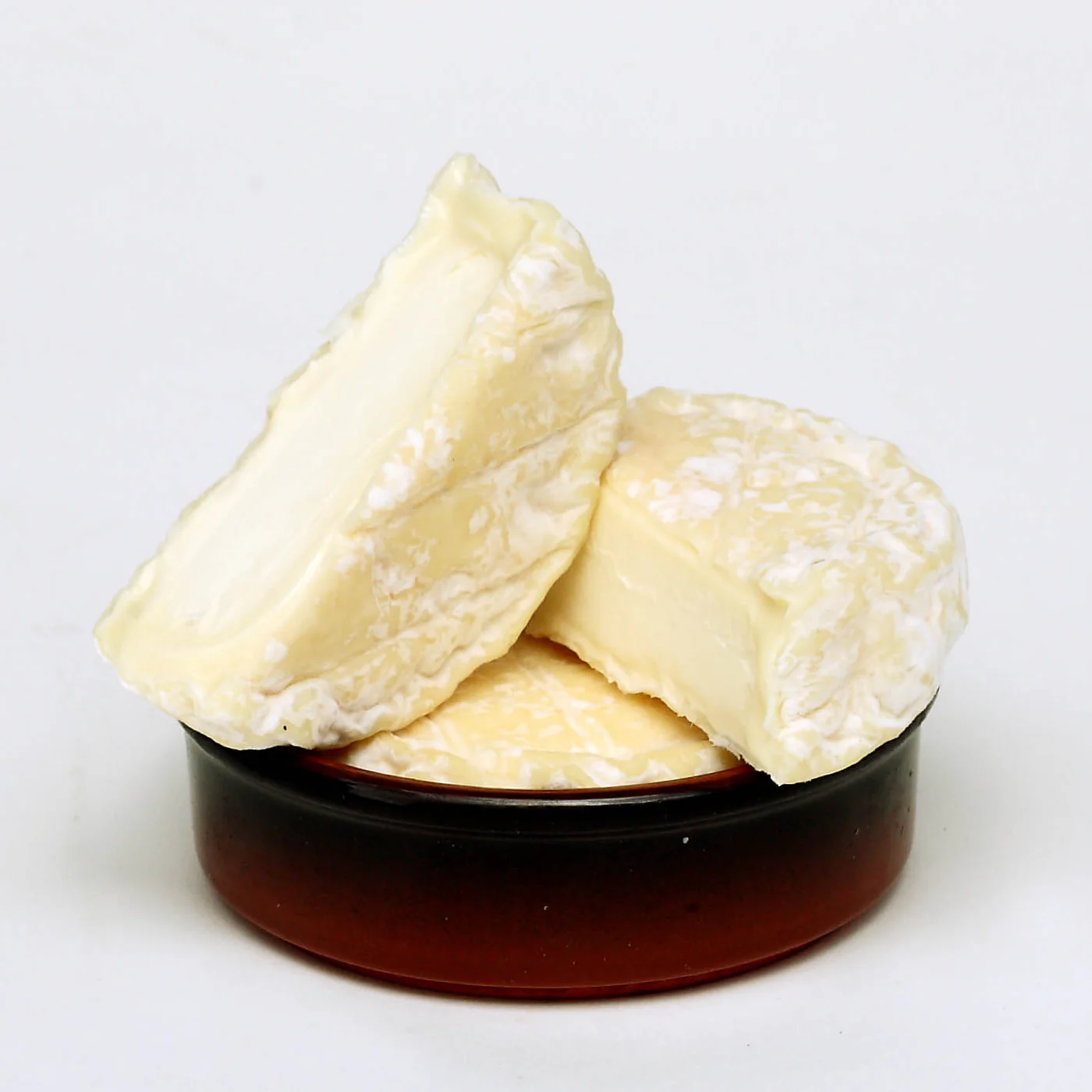 If you're diving into the world of cheese, Saint-Marcellin is a must-try that deserves your attention. This little round cheese, hailing from the Rhône-Alpes region of France, isn't just another dairy product – it's a delicious experience waiting to unfold. What makes it stand out? Let's explore!
If you're diving into the world of cheese, Saint-Marcellin is a must-try that deserves your attention. This little round cheese, hailing from the Rhône-Alpes region of France, isn't just another dairy product – it's a delicious experience waiting to unfold. What makes it stand out? Let's explore!
First off, the texture is remarkable. When ripe, Saint-Marcellin becomes delightfully creamy. It practically melts in your mouth, making it a favorite for cheese boards. Pair it with a crusty baguette or some fresh fruit, and you've got a treat that everyone will love.
Then there's the taste. Saint-Marcellin packs a punch of flavor without being overwhelming. It offers a subtle, tangy richness that develops further as it ripens. Each bite is like a mini adventure, with hints of nuttiness and a mild, buttery finish that'll leave you craving more.
Don't forget about its versatility! Whether you're hosting a casual gathering or a fancy dinner, Saint-Marcellin adapts beautifully. It can be enjoyed on its own or used in various dishes, like salads, pasta, or melted over veggies.
Pairing Suggestions for Perfect Enjoyment
If you've just brought home a lovely round of Saint-Marcellin, you might be wondering what to pair it with for the ultimate tasting experience.
First, let's talk about bread. A fresh baguette or some crusty country bread is hard to beat. The texture complements the silky creaminess of the cheese, and it's perfect for spreading.
Fruits are another fantastic option. Think of ripe pears, apples, or figs. Their natural sweetness and crisp texture pair beautifully with the cheese, enhancing its subtle notes.
And don't forget about the drinks! Saint-Marcellin goes wonderfully with a light white wine, like a Sauvignon Blanc or a fruity Chardonnay.
Easy Ways to Use Saint-Marcellin at Home
1. Cheese Board Star
One of the simplest ways to enjoy Saint-Marcellin is by including it on a cheese board. Pair it with some fresh bread, crackers, and fruits like figs or grapes.
2. Savory Baked Dish
Feeling a bit adventurous? Try baking Saint-Marcellin! Just place it in a small ramekin, sprinkle with herbs like thyme or rosemary, and drizzle with olive oil.
3. Salad Addition
Looking to add some flair to your salad? Crumble some Saint-Marcellin on top of your favorite greens.
4. Pasta Perfection
Pasta night? Mix it up by adding Saint-Marcellin to your pasta dishes. Melt it into a creamy sauce, or toss it in with some roasted veggies.
Conclusion: Why Saint-Marcellin Belongs on Your Table
Saint-Marcellin is more than just cheese—it's a creamy bite of French history. From its royal beginnings with King Louis XI to its modern-day PGI protection, this cheese has stood the test of time. Its delicate texture and robust heritage make it a standout in the world of French dairy, offering a unique experience whether enjoyed alone or paired with your favorite foods.
What truly sets Saint-Marcellin apart is its versatility. Whether melted into a pasta dish, baked into a gooey dip, or simply spread on fresh bread, it brings a touch of elegance to any meal. And let's not forget its rich nutritional profile, packed with calcium, protein, and even stress-busting GABA!
Ready to explore more? Dive into the world of French cheese varieties and discover other treasures waiting to grace your table. Visit our French Cheese Collection to find your next favorite—because every bite is a journey through France's culinary heart.
FAQ
1. Can I freeze Saint-Marcellin?
No—freezing ruins its texture.
2. What wine pairs best with French cheeses like Saint-Marcellin?
Light reds (Beaujolais) or crisp whites like Chardonnay complement most soft cheeses.
3. Is Saint-Marcellin lactose-free?
No—it contains traces of lactose.
4. How long does Saint-Marcellin last in the fridge?
Up to 1 week when stored properly in wax paper.
5. Where can I buy authentic Saint-Marcellin outside France?
Look for PGI-certified sellers like Murray's Cheese or La Fromagerie.
6. What makes French cheese production unique?
Many French cheeses like Saint-Marcellin use protected traditional methods, such as raw milk aging and regional molds.
7. Can I cook with Saint-Marcellin?
Absolutely! It melts beautifully in sauces, gratins, or baked dishes.
